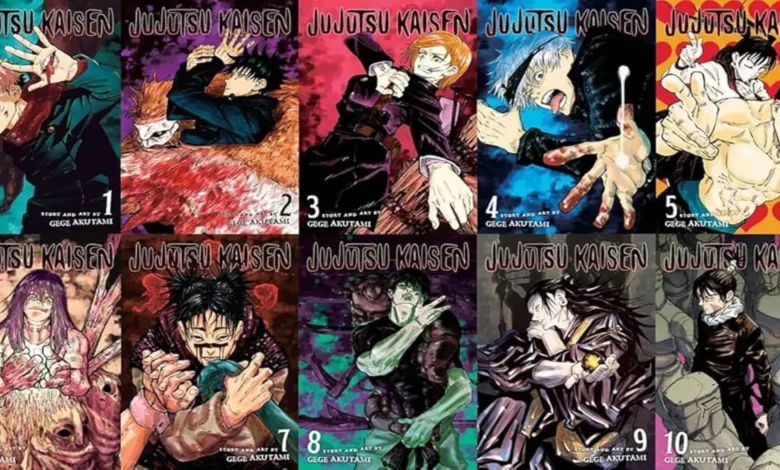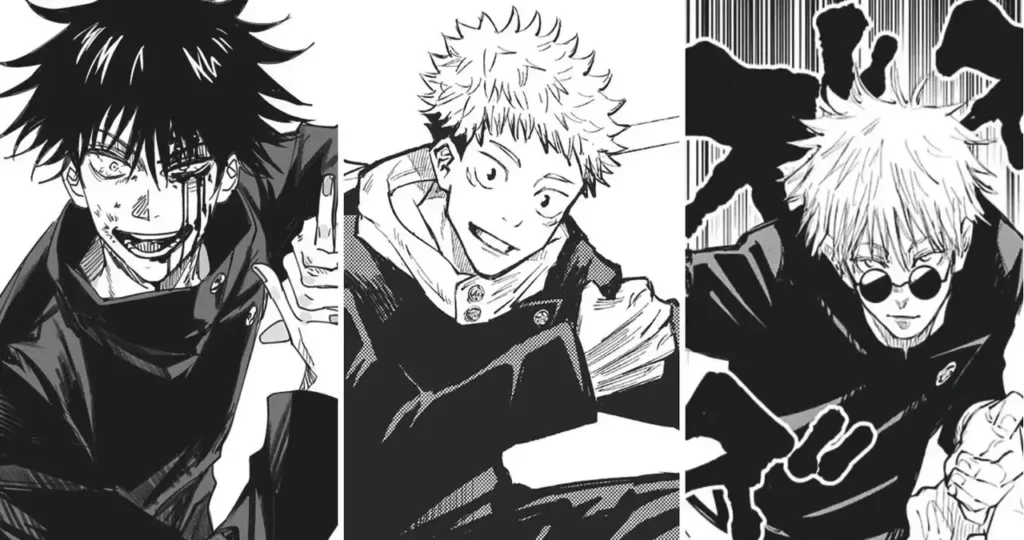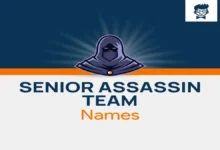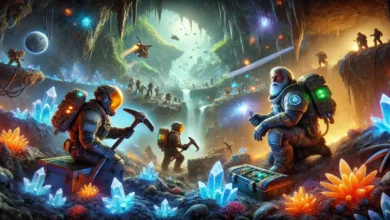JJK Manga: Exploring the Real-Life Inspirations Behind Curses

Introduction
JJK Manga has taken the anime and manga world by storm with its intense battles, profound lore, and complex characters. One of the most fascinating aspects of JJK is its intricate curse system, where cursed spirits and techniques draw from real-world mythology, religion, and Japanese folklore.
In this article, we’ll explore the real-life inspirations behind the curses in JJK Manga and how Gege Akutami blends history, Shinto beliefs, and Buddhist concepts to create a dark and immersive supernatural world.
1. The Concept of Curses in Japanese Folklore

JJK Manga Before we examine specific curses in JJK, it’s essential to understand how curses (noroi or tatari) are perceived in Japanese culture.
- Curses as Negative Energy: In Shinto and Buddhist traditions, curses arise from negative emotions like hatred, regret, and vengeance.
- Onryō (Vengeful Spirits): Many Japanese ghost stories revolve around spirits who return to exact revenge, similar to how cursed spirits manifest in JJK.
- Kegare (Impurity): The idea that spiritual pollution can attract curses aligns with how sorcerers in JJK cleanse cursed energy.
Gege Akutami masterfully adapts these beliefs into JJK’s power system, where negative emotions birth deadly curses.
2. Real-Life Inspirations for Major Curses in JJK Manga
A. Ryomen Sukuna – The King of Curses
Inspiration: The legendary Ryomen Sukuna from Japanese folklore.
- Historical Roots: In Nihon Shoki (Japan’s oldest historical record), Sukuna was a two-faced, four-armed demon slain by a warrior.
- JJK’s Twist: Akutami reimagines Sukuna as a fearsome sorcerer turned curse, embodying ultimate evil.
B. Mahito – The Personification of Human Hatred
Inspiration: The concept of human fear manifesting as monsters.
- Folklore Parallels: Like Noppera-bō (faceless ghosts) and Kuchisake-onna (slit-mouthed woman), Mahito represents the terror humans inflict upon each other.
C. Dagon – The Sea Disaster Curse
Inspiration: Dagon from Lovecraftian Horror and Umibōzu (Japanese sea monster).
- Mythological Link: Umibōzu drowns sailors like Dagon’s domain expansion, Horizon of the Captivating Skanda.
D. Hanami – Nature’s Wrath
Inspiration: Kodama (tree spirits) and Jubokko (blood-drinking trees).
- Eco-Terror Theme: Hanami’s hatred for humanity mirrors ancient beliefs that nature retaliates when disrespected.
3. Buddhist & Shinto Influences on Cursed Techniques
A. Domain Expansions – Sacred Spaces Turned Deadly
- Buddhist Mandalas: Domains resemble mandalas (spiritual diagrams used in meditation).
- Shinto Ritual Spaces: Just as shrines purify, domains corrupt sacred geometry for lethal purposes.
B. Binding Vows – The Power of Oaths
- Kishōmon (Demon Pact): In folklore, dealing with spirits has severe consequences, akin to JJK’s binding vows.
C. Reversed Cursed Technique – Healing Through Negative Energy
- Esoteric Buddhism: The idea of turning suffering into enlightenment mirrors how reversed cursed energy works.
4. Real-Life Locations & Cursed Objects in JJK
A. Tokyo Jujutsu High & Real Shrines
- Inspired by Actual Tokyo locations like Meiji Shrine, where shimenawa (sacred ropes) ward off evil.
B. Cursed Tools Like Playful Cloud & Inverted Spear of Heaven
- Based on Shinto relics (shinkī) and legendary weapons (Totsuka-no-Tsurugi from Kojiki).
5. How Gege Akutami Modernizes Ancient Myths
Akutami doesn’t just copy folklore—he reinvents it:
- Cursed Spirits as Social Commentary: Mahito reflects modern societal fears (isolation, war, hatred).
- Sukuna as a Dark Anti-Hero: Unlike traditional demons, Sukuna has charisma and depth.
Conclusion
The JJK Manga brilliantly merges ancient Japanese beliefs with modern storytelling, making its curse system feel both mythical and terrifyingly real. By understanding the real-life inspirations behind Jujutsu Kaisen’s curses, fans gain a deeper appreciation for Gege Akutami’s world-building genius.
Whether vengeful spirits, sacred rituals, or legendary demons, JJK proves that the best horror and fantasy are rooted in cultural truth.
SEO Optimization:
- Primary Keyword: JJK Manga
- Secondary Keywords: Jujutsu Kaisen curses, Gege Akutami inspirations, Japanese folklore in JJK
- Readability: Short paragraphs, bullet points, and headers for easy scanning.
Would you like any refinements or additional sections?
FAQS
Here are 5 FAQs based on the article “JJK Manga: Exploring the Real-Life Inspirations Behind Curses”, optimized for SEO and reader engagement:
FAQs About JJK Manga’s Curses & Their Real-Life Inspirations
1. Is Ryomen Sukuna from JJK based on an absolute legend?
A: Yes! Ryomen Sukuna comes from a two-faced, four-armed demon mentioned in Nihon Shoki (an ancient Japanese historical text). Gege Akutami reimagined him as the King of Curses, blending myth with original lore.
2. How does Japanese folklore influence JJK’s curse system?
A: JJK heavily draws from:
- Onryō (vengeful spirits) – Curses born from negative emotions.
- Kegare (impurity) – The concept that hatred attracts curses.
- Yokai & Kami – Many cursed spirits resemble traditional monsters or deities.
3. Are Domain Expansions inspired by fundamental religious concepts?
A: Partially! They mirror:
- Buddhist mandalas (sacred geometric designs).
- Shinto ritual spaces, but twisted into deadly battlegrounds.
4. What real myths inspired Mahito’s character?
A: Mahito embodies:
- Noppera-bō (faceless ghosts representing human fear).
- Kuchisake-onna (a vengeful spirit symbolizing trauma).
- His design reflects how hatred manifests physically in folklore.
5. Do cursed tools like Playful Cloud exist in Japanese legends?
A: Indirectly! Many JJK weapons parallel:
- Shinto sacred relics (shinkī).
- Legendary swords (e.g., Totsuka-no-Tsurugi from the Kojiki).
Why These FAQs Work for SEO:
- Targets long-tail queries (e.g., “Is Sukuna based on real mythology?”).
- Uses keywords naturally (JJK manga, Japanese folklore, curses).
- Encourages engagement (readers may search for more profound lore after reading).
Would you like adjustments (e.g., a more casual tone, extra details)?





